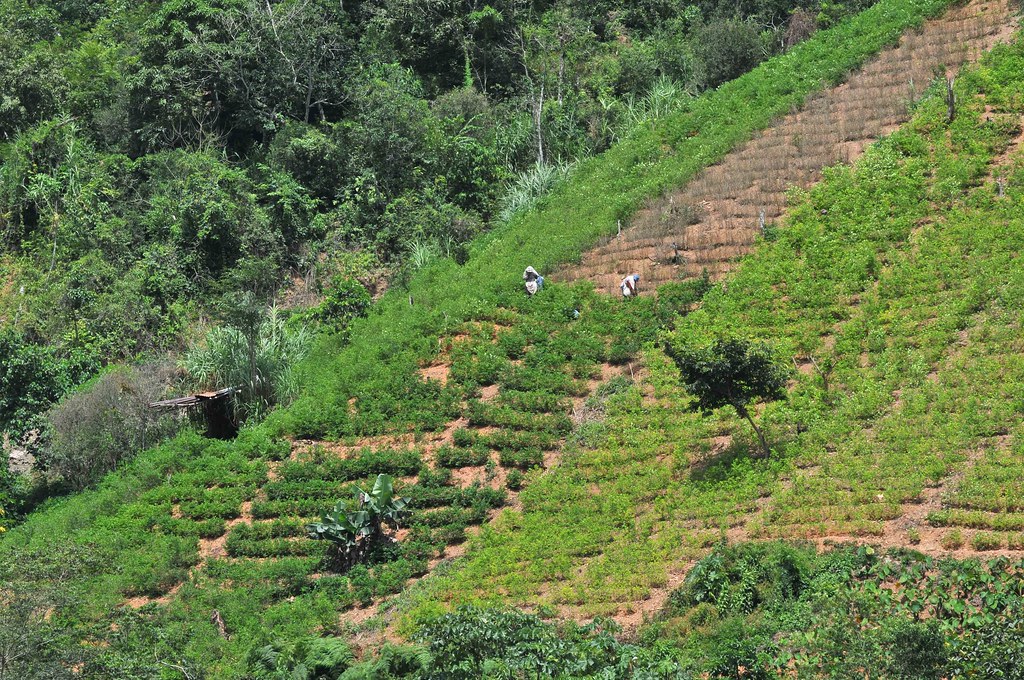
Colombia, a nation known for its lush landscapes and rich cultural heritage, is currently facing a significant shift in its rural economy, particularly in regions historically reliant on coca cultivation.
The Decline of Coca Cultivation
In the northern Colombian municipality of Tibú, a major coca-producing area, there has been a drastic reduction in coca cultivation. This decline is attributed to a 40% drop in the value of coca paste, a key commodity in these regions. The decrease in coca prices has led to economic hardships for local communities, with many farmers abandoning their fields and local businesses suffering. The impact extends beyond Tibú, affecting several other regions in Colombia that have traditionally depended on coca cultivation for their livelihood.
Environmental and social impacts
Coca cultivation, while a small fraction of overall deforestation activities in Colombia, has significant environmental and social consequences. The process involves clearing large areas of forest, leading to habitat loss and increased carbon emissions. Additionally, the production of cocaine from coca leaves involves toxic chemicals, further harming the environment and local biodiversity. The environmental cost of coca cultivation is compounded by the fact that these activities often occur in some of Colombia’s most biodiverse regions, putting rare species and ecosystems at risk.
Opportunities for sustainable change
Despite the economic downturn, there emerges a silver lining: opportunities for sustainable livelihood transitions. Some experts and local farmers see this as a chance to move away from illicit crop cultivation. However, there is also a risk that farmers might turn to other harmful activities, like illegal gold mining, which is currently more profitable than coca cultivation. The challenge lies in providing viable alternatives that are both sustainable and economically feasible for these communities.
Efforts to address the coca crisis have been complicated by policy shortcomings and implementation challenges. Programs intended to encourage farmers to switch to alternative crops have faced obstacles, including lack of technical support and insufficient enrollment. The current Colombian government is attempting to refocus efforts on targeting drug traffickers rather than growers, but the effectiveness of this approach remains to be seen. The situation calls for a multifaceted approach that addresses the root causes of coca cultivation, including poverty, lack of economic opportunities, and the need for infrastructure development in rural areas.
The broader context
The situation in Colombia’s coca-growing regions reflects a complex interplay of economic, environmental, and social factors. As the country grapples with these challenges, the future of these communities and their surrounding environments hangs in the balance. The shift away from coca cultivation presents both risks and opportunities, and the path forward requires careful consideration and coordinated efforts across multiple sectors. It is essential for the Colombian government, along with international partners, to develop strategies that are sensitive to the needs of local communities while promoting sustainable development and environmental conservation.
For the farmers of Tibú and similar regions, the current crisis is a turning point. While some are exploring alternative crops like cacao, yuca, and sugarcane, the transition is fraught with challenges. The success of these efforts will depend on the support they receive, not just in terms of financial investment but also in access to markets, technical assistance, and infrastructure development. The situation in Colombia serves as a reminder of the intricate connections between rural economies, environmental stewardship, and global drug policies. The choices made in the coming years will have lasting implications for both the people and the environment of this vibrant country.
See all the latest news from Colombia and the world at ColombiaOne.com. Contact our newsroom to report an update or send your story, photos and videos. Follow Colombia One on Google News, Facebook, Instagram, TikTok and subscribe here to our newsletter.


